

Andrew Maclean
2025 Mahindra XUV700 AX7L vs Nissan X-Trail ST-L comparison: Spec battle
2 Months Ago
Hyundai says the 2021 Santa Fe is a mid-life update, but the changes to its seven-seater are more than just skin deep.



Contributor
New from
$43,000
excl. on-roads

Contributor
New from
$43,000
excl. on-roads


Contributor
New from
$43,000
excl. on-roads

Contributor
New from
$43,000
excl. on-roads
Quickly see how this car stacks up against its competition. Select any benchmark to see more details.
Where expert car reviews meet expert car buying – CarExpert gives you trusted advice, personalised service and real savings on your next new car.
It’s not often a carmaker sells itself short, but Hyundai appears to have done just that.
Although it bills the new Santa Fe as a mid-life refresh, there’s big changes under the skin. The engines have been overhauled, the interior has been redesigned, and the body is a not-insignificant 15mm longer and 10mm wider than before. Huh?

Hyundai has lofty aspirations of the 2021 Santa Fe. At the top end of the range, the Highlander gets a more upmarket interior with real aluminium trim and Nappa leather, along with a digital instrument binnacle shared with the related Kia Sorento.
At the bottom end, Hyundai has reworked the standard equipment list of its entry-level Santa Fe and the one-step-up Active to draw more buyers at that price point too.
Has Hyundai messed too much with the formula, or does the 2021 Santa Fe improve on what was already an appealing formula?
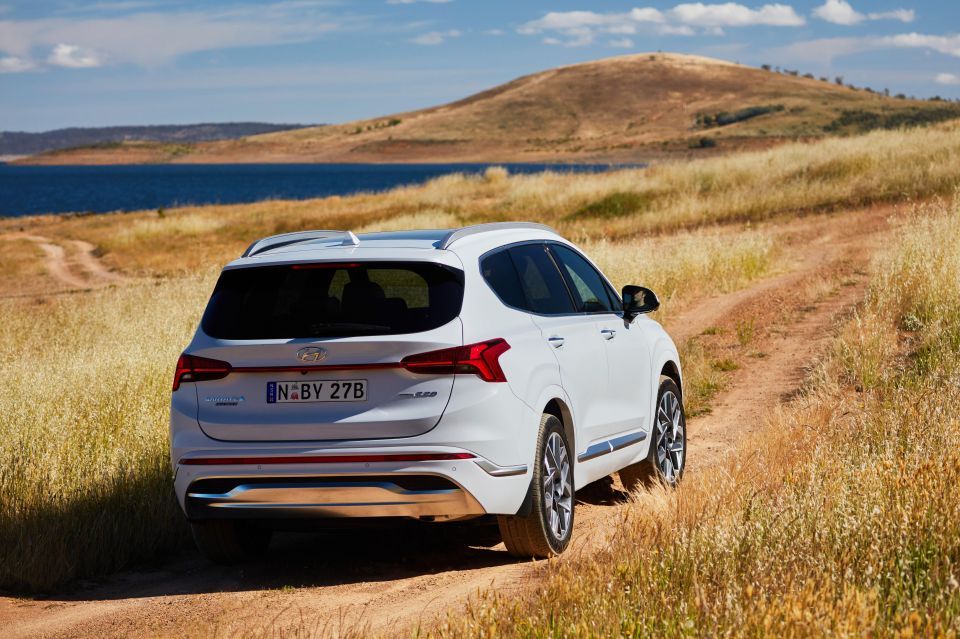
Prices are up across the range. The entry-level model, now simply know as Santa Fe, kicks off at $44,700 before on-road costs, while the range-topping Santa Fe Highlander turbo-diesel tops out at $65,200 before on-roads.
All prices (excluding on-road costs) are below:
The new entry price puts the Santa Fe petrol into direct competition with the Mazda CX-9 Sport FWD ($45,990) and Kia Sorento S ($46,990 drive-away).

Mazda doesn’t offer a diesel in the CX-9, however its entry-level CX-8 Sport kicks off at $46,910 before on-road costs.
At the other end of the range, the range-topping Santa Fe Highlander petrol undercuts the Mazda CX-9 Azami FWD ($66,190) and is more expensive than the Kia Sorento ($61,990 drive-away) once on-road costs are factored into the equation.
The turbo-diesel Highlander is more expensive than the equivalent Kia Sorento ($64,990 drive-away), and is slightly pricier than the Mazda CX-8 Asaki diesel AWD ($65,440).

Standard kit in the base Santa Fe includes an 8.0-inch infotainment touchscreen with wireless Apple CarPlay and Android Auto, along with a 4.2-inch digital trip computer between the analogue dials.
Although it looks similar to the previous system, the 8.0-inch display is running new software for 2021. It’s still home to a reversing camera, backed by rear parking sensors. Wireless phone charging features as well.
Even the base model gets LED headlights and daytime running lights, black grille inserts, 17-inch alloy wheels, and an electric parking brake.

Moving to the Santa Fe Active adds leather seat trim, dual-zone climate control, along with keyless entry and start.
It also brings rain-sensing wipers, rear privacy glass, front parking sensors, power-folding exterior mirrors, steering-mounted paddle shifters, and 18-inch alloy wheels.
The Santa Fe Elite gains a 10.25-inch infotainment system with wired Apple CarPlay and Android Auto, DAB+ radio, and factory satellite navigation, along with a Harman/Kardon 10-speaker premium sound system.
The driver sits in a 10-way power-adjustable seat and the passenger gets an eight-way unit, while the tailgate is also powered. It gets an auto-dimming rear-view mirror, second-row sun shades, third-row USB charge ports, and 20-inch alloy wheels.

Finally, the range-topping Highlander subs the analogue instruments for a 12.3-inch digital instrument cluster with blind-spot view cameras, a head-up display, a surround-view camera, and Remote Smart Park.
The front seats are 14-way adjustable, heated and cooled units, and the steering wheel is heated. The second-row seats are also heated.
Gone is the standard leather trim, replaced by Nappa leather. There’s also aluminium trim on the centre console and ambient lighting.
Premium paint is a $695 option range-wide, while the Elite is offered with a Cognac Brown leather interior for $295. The Highlander offers a Camel Beige finish leather interior for $295.

When the Hyundai Santa Fe was tested by ANCAP in 2018, it received a rating of five stars.
That rating was based on an adult occupant protection score of 94 per cent, child occupant protection of 86 per cent, pedestrian protection of 67 per cent and safety assist of 78 per cent. The new Santa Fe won’t be re-tested.
The base 2021 Santa Fe will come standard with the following active safety features:
The range-topping Highlander adds a blind-spot camera view in the digital instrument binnacle, reverse autonomous emergency braking, and remote smart parking.
There are also front, front-side and curtain airbags for the first row, as well as curtain airbags for the second row.

There are two Santa Fe designs inside. The first looks roundly similar to that of the current car, with a low-set transmission tunnel and simple climate control binnacle sitting below the tablet-style infotainment system.
Although it’s short on luxury features compared to the headline-grabbing Highlander, the base Santa Fe doesn’t disgrace itself inside.
The cloth trim is still classy, and there wasn’t much wrong with the design of the current-generation model’s dash and transmission tunnel design.
The 4.2-inch display between the analogue dials looks a bit small, and the new font on the dials themselves is bolder but tougher to read than before, but with wireless charging, plenty of storage, and an easy-to-use update to the infotainment system, there’s isn’t really much wrong with it.
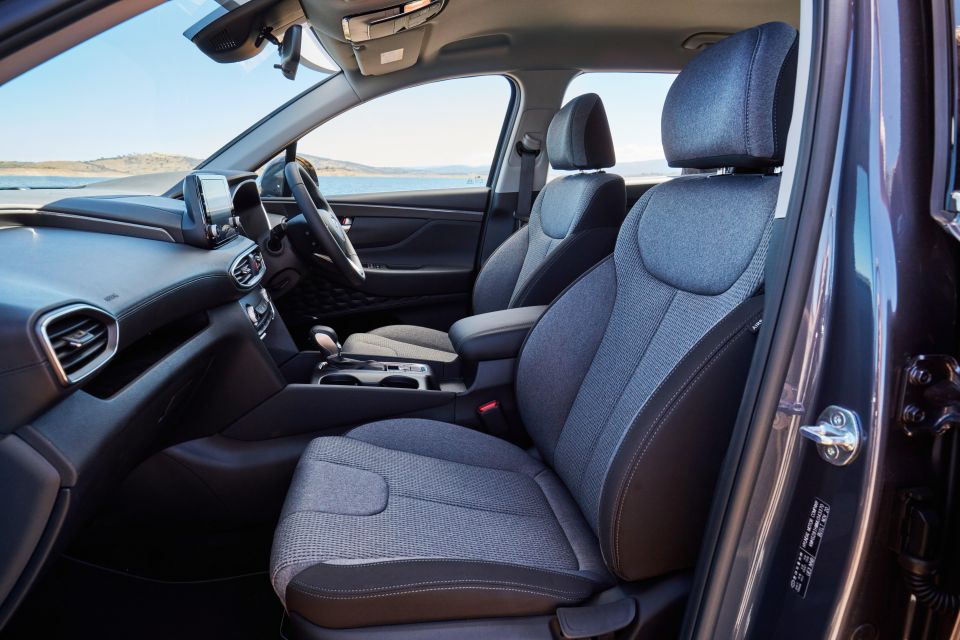

Where Hyundai has really spent its time is on the upper-spec Santa Fe, especially the Highlander.
All models above the base Santa Fe get a rising transmission tunnel and push-button gear selector that, when you’re nestled next to it, makes you feel a bit like a starship captain.
Gone is the 8.5-inch infotainment display, replaced by a 10.25-inch unit shared with the latest Hyundai and Kia models, including the related Kia Sorento.
It’s backed by a row of hard shortcut buttons atop the transmission tunnel, although most functions can be accessed through the touchscreen.

Although it’s technically the flagship system, the 10.25-inch system doesn’t have wireless Apple CarPlay or Android Auto like its little brother. CarPlay was also windowed on our tester, something we haven’t experienced before with this system.
Otherwise it’s a relatively simple, smartly laid-out system with attractive graphics. Also attractive is the 12.3-inch digital instrument binnacle, which has flashy animations as you switch drive modes and is home to Hyundai’s clever blind-spot view camera.
More customisation options would be nice, however, as would proper map integration to match that of Volkswagen and Skoda’s latest system.



Moving to the flight-deck style transmission tunnel has freed up a massive storage space below, which works in tandem with two cupholders, the secure wireless charger (which cleverly faces away from the driver), and a deep bin under the armrest to make sure there’s plenty of space for keys, wallets, phones, and road-trip snacks.
There’s no questioning to quality of the trim, from the nappa leather to the aluminium finish of the transmission tunnel, but the flight deck design does also have some strange elements to it. Why is the drive mode selector so large, for example, given most drivers will never take the car out of its default Smart mode?
Rear seat space is excellent, with strong leg- and headroom for taller passengers. The sliding rear seats can be moved forward or backwards to free up more boot space or leg room for third-row passengers.
As you’d expect there are air vents and USB ports for second-row passengers. There really isn’t much to complain about back there.



Meanwhile, the third row is still best for part-time use or small children. Although it’s comfortable for short people over short trips, they aren’t quite as capacious as those in the Palisade, let along a proper people mover like the Kia Carnival.
There are air vents and cupholders for third-row passengers, and the curtain airbag covers the glasshouse but not the D-pillar.
Boot space is between 571L and 782L with the rear seats in place, depending on how far forward they’re slid. That expands to 1649L with the second row folded flat, and contracts to 130L with the third row in place.

Where expert car reviews meet expert car buying – CarExpert gives you trusted advice, personalised service and real savings on your next new car.
The base engine in the 2021 Santa Fe is still a 3.5-litre petrol V6, mated with an eight-speed automatic transmission. It’s front-wheel drive, and has 200kW of power and 331Nm of torque.
Although it shares its displacement and layout with the outgoing engine, and despite power dropping by 6kW and torque dipping by 5Nm, Hyundai says the petrol in the new Santa Fe has been retuned to respond better in the mid-range than before.
Claimed fuel economy is 10.5L/100km on the combined cycle, an improvement of 0.1L/100km.
The range-topper is a 2.2-litre turbo-diesel with 148kW of power and 440Nm of torque. Although its displacement is the same as before, the engine has been heavily revised for 2021 and is now combined with an eight-speed dual-clutch transmission and all-wheel drive.
The reworked turbo-diesel uses 6.1L/100km instead of the 7.5L/100km its predecessor promised, a 19 per cent improvement.

There wasn’t much wrong with the pre-update Santa Fe on the open road, and there isn’t much wrong with the 2021 model.
Our launch drive was almost exclusively on the highway, where even the range-topping Highlander on its 20-inch alloy wheels is comfortable and quiet.
It soaks up lumps and bumps without fuss, and there’s no big car float over crests. The Santa Fe eats up the miles without fuss.
Road noise is well suppressed, in keeping with the car’s more upmarket new interior and premium pitch. With that said, the tyres and suspension can thwack noisily over the nastiest, most pitted tarmac. Hyundai even included some gravel on the drive route, and the Santa Fe soaked it up without a hitch.

The steering in the Santa Fe is slightly heavier than that of the Palisade at low speed, although we didn’t spend enough time in the city to really put it to the test.
Visibility is good from all angles, aided by the usual array of sensors and cameras. The blind-spot view camera in the Highlander is a nice touch, like a more polished take on the LaneWatch camera pioneered by Honda.
Looking down at the instrument binnacle isn’t the most natural thing in the world, but it’s a good for double-checking for bikes.
The turbo-diesel engine in the 2021 Santa Fe might look similar to the pre-update unit on paper, but it’s clear some work has been done under the skin when you put your foot down.

For starters, it’s traded its torque converter automatic transmission for a dual-clutch, not that you’d necessarily know it.
Although it’s not quite as smooth as the transmission in the Palisade or outgoing Santa Fe, there’s hardly any jerkiness off the mark or on light throttle at city speeds.
Once you’re up and rolling, the eight-speed gearbox is decisive and quick-shifting. Lean on the throttle and it’ll sharply drop a gear to slot the engine into its torque band, at which point it picks up quickly and pulls strongly.
It feels stronger than the same engine in the Palisade, with more punch in the mid-range. That’s likely down in part to the fact the Santa Fe is around 200kg lighter than the eight-seat Palisade, and in part to the work that’s gone on behind the scenes.
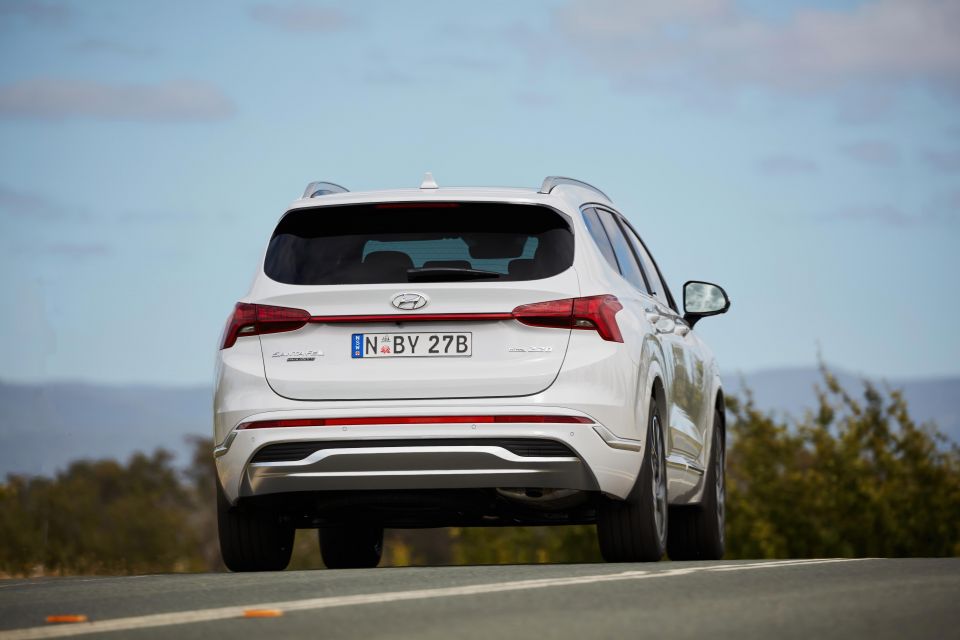
Like before, there’s a mild diesel grumble in the background when you accelerate hard, but otherwise it hums away quietly.
We’ll need to load a car up with five people to see how it holds up on the open road, but its performance with two big blokes on board was more than adequate. It’s likely to be the same with a family in tow, even if it’s not necessarily going to set your pants on fire.
Vibrations are well suppressed, with barely any sneaking through the seats, door trims, and steering wheel. It’s a polished engine, no doubt about it.
Stay tuned for a drive of the Santa Fe petrol when cars are available.

Like the wider Hyundai range, the Santa Fe packs a five-year, unlimited-kilometre warranty.
The petrol V6 engine has its first five services capped at $399, while the turbo-diesel engine will set you back $459 per visit.
Scheduled maintenance is required every 12 months or 15,000 kilometres, whichever comes first.
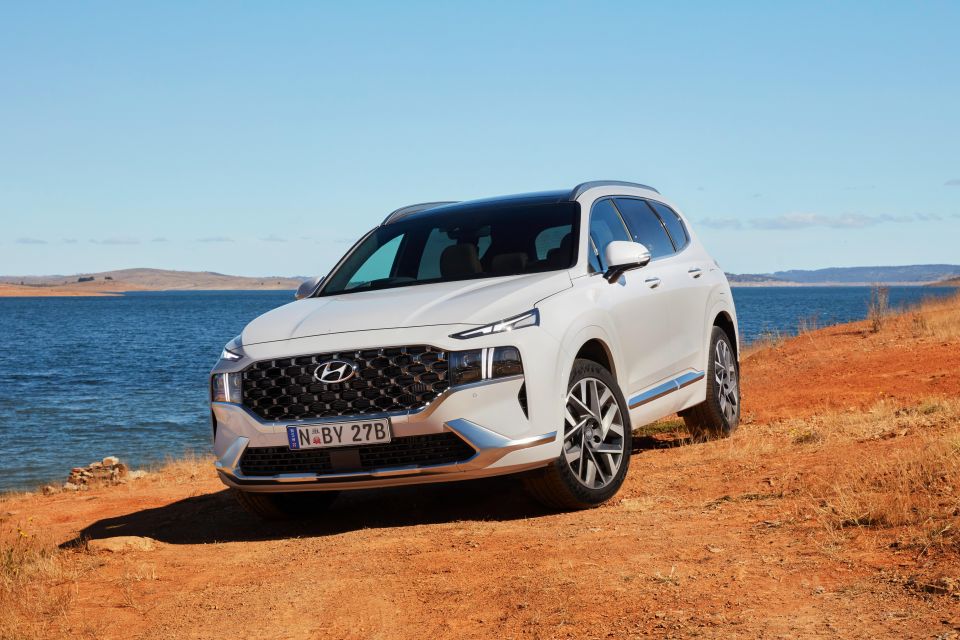
Although there are some significant changes to the Santa Fe, Hyundai hasn’t messed too much with a winning formula for 2021.
The turbo-diesel engine packs more of a punch and the dual-clutch transmission doesn’t suffer any of the foibles that occasionally make them feel slightly unnatural compared to a torque converter.
The interior upgrades are nice at the top end of the range, and bring the Santa Fe into line with the Palisade on the design front. There’s also more storage inside, although the button-heavy controls and flight deck aesthetic aren’t necessarily a step forward from what was already an attractive, clean cabin.
Hyundai has focused on making the entry-level Santa Fe and Santa Fe Active more attractive, and on paper the simpler range is a step forward.
The Santa Fe was already a good thing, and it’s been made better for 2021. A head-to-head with the very similar, slightly cheaper Kia Sorento beckons to see which of these seven-seat Korean crossovers has the edge in the battle for family hearts and dollars.
Click the photos for the full gallery
MORE: Hyundai Santa Fe news and reviews MORE: Hyundai news and reviews
Where expert car reviews meet expert car buying – CarExpert gives you trusted advice, personalised service and real savings on your next new car.
Scott Collie is an automotive journalist based in Melbourne, Australia. Scott studied journalism at RMIT University and, after a lifelong obsession with everything automotive, started covering the car industry shortly afterwards. He has a passion for travel, and is an avid Melbourne Demons supporter.


Andrew Maclean
2 Months Ago


James Wong
2 Months Ago


Josh Nevett
1 Month Ago


William Stopford
1 Month Ago


Max Davies
17 Days Ago
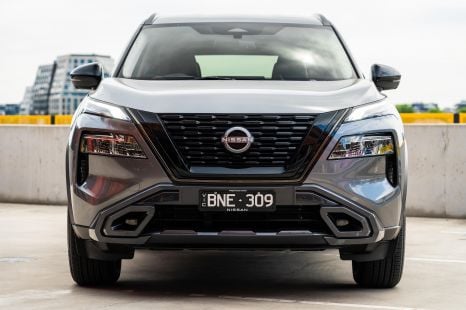

William Stopford
8 Days Ago